Warcry 2nd edition is now nicely settling in. With the core rules and an enormous number of factions available for free on Warhammer Community, the changeover has been very smooth between editions. The rules changes are all improvements, reactions add a lot to the game, but the new edition has been a small evolution, not a revolution in the rules. Edge cases are fixed, and you can’t play fetch with objectives using beasts anymore, etc etc. They’ve also tidied up runemarks so there aren’t 27 variations of a skull in a circle and you’re left trying to work out which is which without using a magnifying glass.
At it’s core it’s still a double action, alternate activation game where you divide your warband into three drops – dagger, shield and hammer (though these now have to be equal numbers of models to avoid people putting almost everything in one drop) and put them around different deployment zones. This means that you start with your force split up, and you’ll need to think about what goes in which drop and how that affects your ability to complete the objectives.
Heart of Ghur gave a solid start to the new edition, with 3D terrain and plenty of it, two new warbands (covered in this review) and updated matched play rules including guidance on running events. This article is mainly pitched at people who want to dive into matched play, but it’s also applicable to the “Warcry curious” who don’t want to go to events.
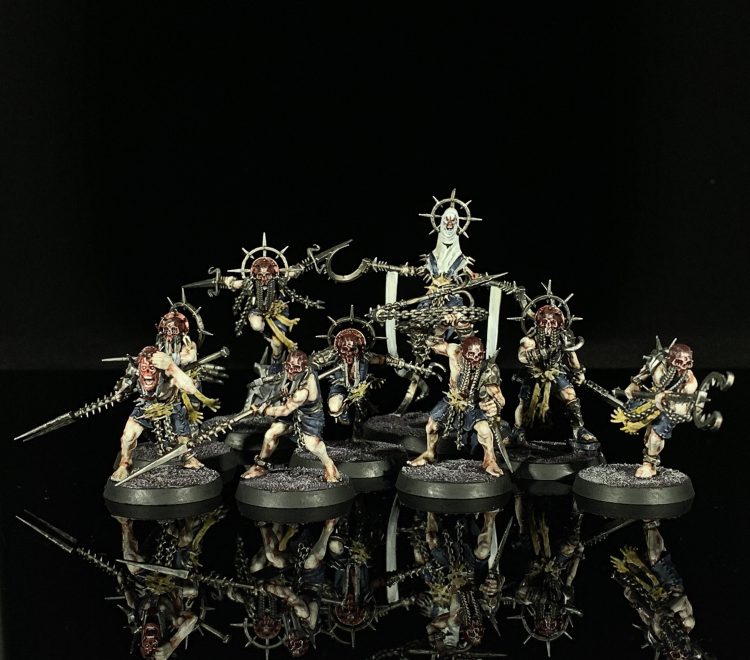
Table of Contents
Warband Design
Warband design has changed, and you can now take up to three hero level models in your warband, and up to two allies from the same Grand Alliance (but only one of these can have the hero runemark, and then counts towards your hero allowance, while the other would have to have the ally runemark, which is not common outside of Chaos), three thralls (tamed beasts of which you can take) and one monster (which is certainly an option, but one you need to think carefully about because they’re a lot of points and play differently).
You have a thousand points to spend and you can’t hit everything in the list below. Some warbands just don’t have all of the following available, and while you can use an ally slot to bring in a ringer and compensate for this, that means spending a lot of points when you only have a thousand points to spend.
You need to identify how you want to play, what your warband choice can do, and go from there. I would certainly recommend experimenting to find a list that suits your playstyle. Play some games and get the feel for the band, and then make changes to suit your tastes and what you find most effective.
Players will always have the temptation to get a single box of figures and just go with that, and it’s a viable list for a lot of the warcry factions, which are literally built on that. In matched play though, where you’re looking to put together a fairly optimised warband, you’ll want to go beyond that and look at what allies, thralls and monsters could bring to the table.
I’m going to list a bunch of important factors, which you can’t get all of in your warband. That is fine because the game is designed that way, but you need to know what they are and have an answer for the things you don’t have.
Also in this article I’ll be talking about the matched play scenarios in the book, which are fairly balanced and interesting, but it’s worth thinking about the games you’ll have to play when selecting your warband.
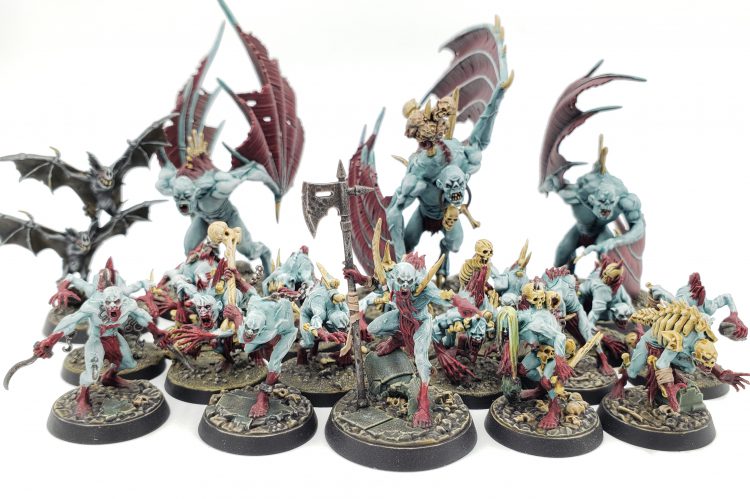
Float like a Butterfly….
Warcry is a game where to win, you’re going to have to move around the board. This is where you’ll need to pay attention to your models statlines, and special abilities. Five out of six of the main book matched play scenarios involve grabbing a treasure and lugging it around the board, holding objectives at the end of the game, or holding table quarters. Only one scenario is purely about murdering the opposition (though this is something almost every player forgets at some point).
This means movement is very important, and while you can double move it means that unless you are burning an ability, you are doing nothing else that turn to just get around the board. In my opinion movement 3 is a pretty big drawback in terms of playing the objectives (though movement 3 is normally coupled with being tough as nails making up for it somewhat when it comes time to kicking the opposition off objectives).
In designing your warband then look at the movement of the models that you have. Do you have a fast objective grabber like a cavalry model available? What is your average movement? Do you have abilities that can boost a model’s movement? Do you have a beast model that can run around (though not grab the treasure obviously) and attack your opponent’s treasure grabbers, or prevent them being able to get there first?
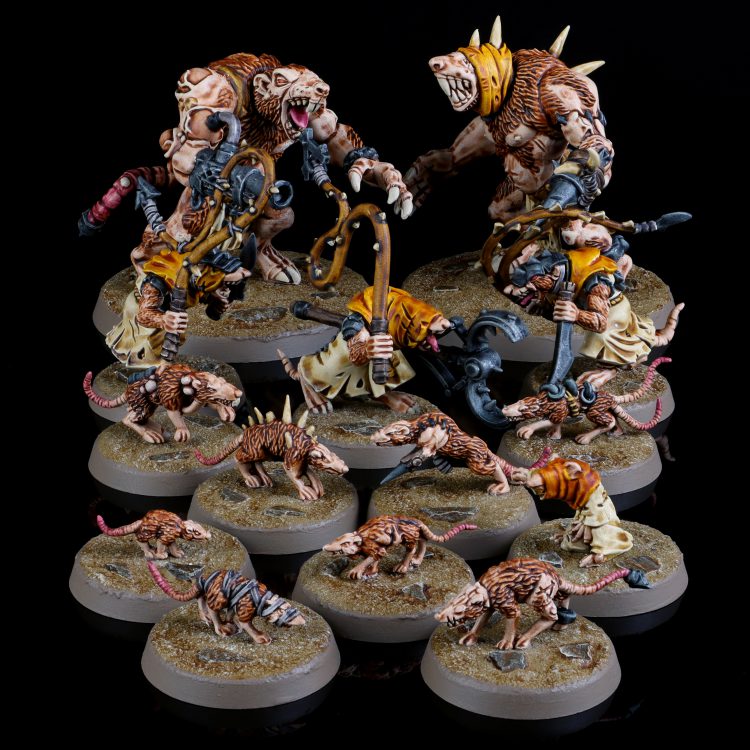
Credit: Pendulin
Sting like a Bee
The average Toughness in Warcry is 4. Some models are higher (and pay for that in points cost) and some are lower (and generally cheaper and faster because of this) This means that being Strength 5 and damaging a lot of things in the game on 3+ is pretty useful.
Look at the big hitters you have available, and what abilities you have that boost either damage or strength in combat. If you don’t have access to strength 5, what do you have for damage output? Do you have large numbers instead of it? Does your warband go for whittling down with ranged weapons, or board control, or something else to replace punching really hard?
You will inevitably run across some warbands with high toughness and high strength, but they will usually have small numbers and possibly low speed. They’re also pricey, so losing a single model hurts their ability to control objectives significantly more than it would hurt you, and disposable speed bump models to tie them up and stop them moving around the board is a viable strategy.
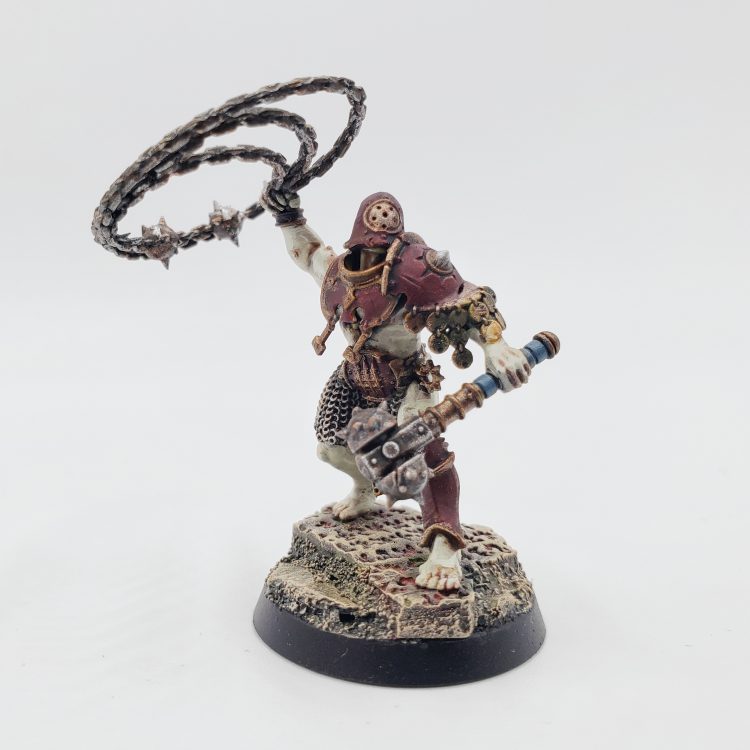
Just out of Reach…
Some melee weapons have a 2” (or even 3” for flails) range in Warcry. Against opponents with 1” range weapons if you stand 1.5” away you can engage them while they have to spend a move action to get into engagement range and hit you back. An action spent on movement is an action spent not doing something useful like hitting you. They also have to disengage to move while you can simply move.
This is why you see models with spears getting used, even if fairly often they are sacrificing a dice in attack to get that bonus.
Effective melee range on models is something worth paying attention to, and you can be a little gamey in making sure your 2” range models are engaging your opponents 1” range models.
This of course applies significantly more with missile weapons (any weapon with a reach of greater than 3″ is now automatically a missile weapon). Missile weapons have greatly varying levels of effectiveness in Warcry, and for every 1/3 damage bow there’s someone who accidentally brought a chaingun to a fantasy setting (looking at you Kharadron Overlords). If you’ve got good shooting available it can be great to increase the effectiveness of a slow model or a model you want to sit at the back. Again, look at your warband options and what you can bring in from allies. Availability of shooting to chip away at a powerful enemy model and soften them up or harpoon them or whatever you have available can make a big difference in winning subsequent combats or pulling enemy models out of position.
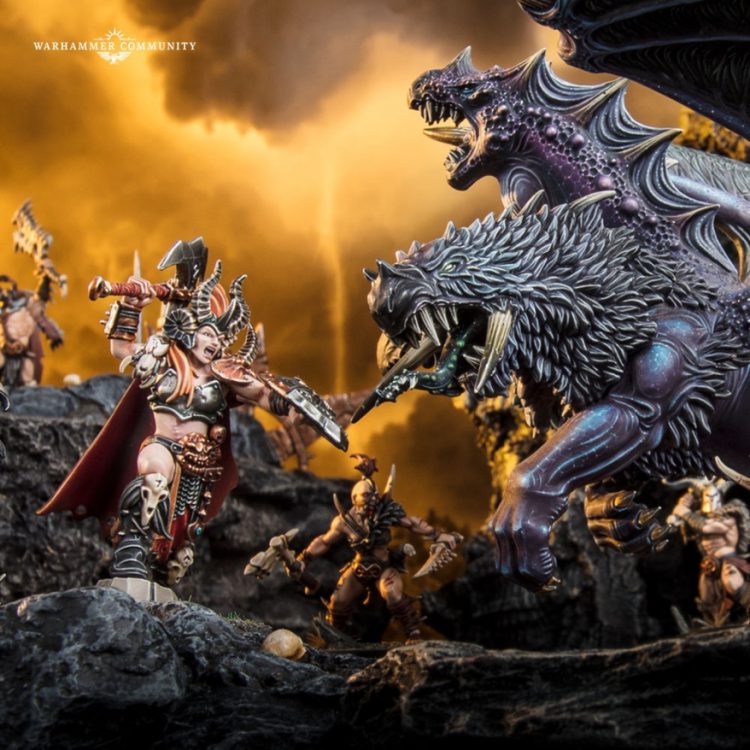
You’ve got to have friends…..
You have to have some numbers in this game. The minimum warband size is 3, and that would be a super bad idea. The maximum warband size is 15, and while that would be amusing that would force you to take a lot of low point models like goblins or skeletons or gnoblars or whatever, which have their place (pushing buttons, dragging treasure, tying up models that cost four times as much, etc). They aren’t necessarily what you want to spend all your points on when you will want to take some good stuff.
The sweet spot is 8-12 activations. You want plenty of ‘useful’ models with good abilities, high strength, high toughness and punch (though you won’t get all of these outside of very pricey models) and some jobbers to push buttons, act as speed bumps and play the objectives.
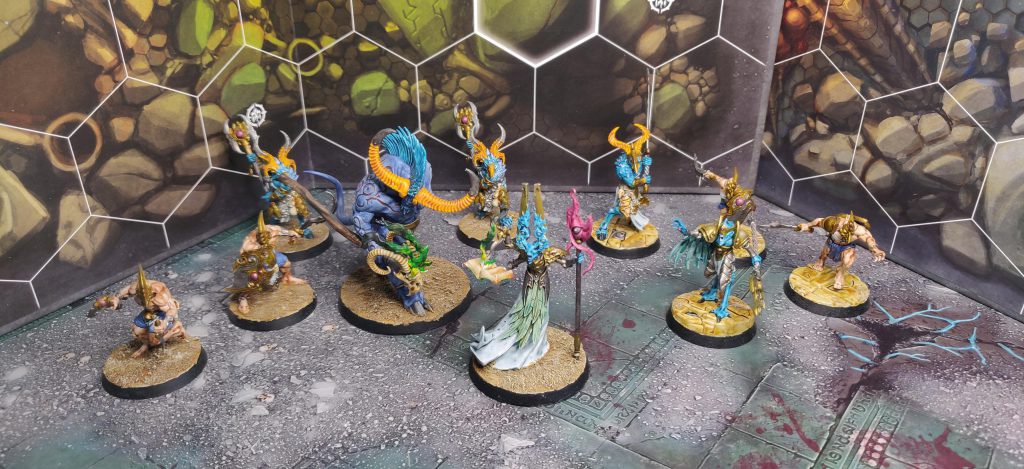
You gotta be tough
Toughness is worth looking at in two ways, toughness or total wounds. Toughness is how hard it is to damage you and wounds is how much damage you can take. You want at least 80 wounds (though 80 wounds on toughness 6 models is worth a lot more than 80 wounds on toughness 4) and ideally you’ll be running 100-120.
If you aren’t a tough warband, how will you mitigate this? Numbers, so losing models matters less? Avoiding combat and looking for shooting and/or board control? Picking engagements and trying to put down your targets before they can punch back hard? Using abilities to buff your models or debuff enemies? Using numbers to swarm your opponent and fish for critical hits to do major damage?
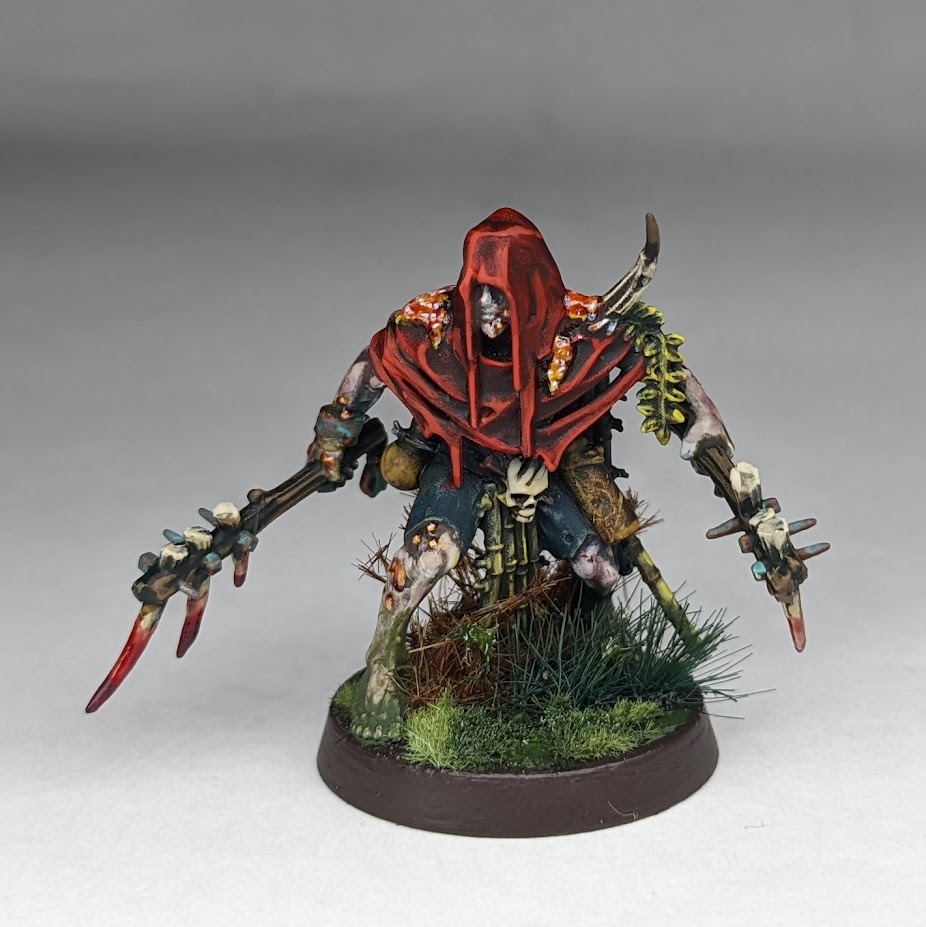
Hey, I’m waiting over here….
Waiting allows you to sacrifice two actions to have one new activation and one action later in the turn, and is useful for drawing out your opponents actions as a sort of overwatch. You can also use an ability and then wait and when you activate later use an ability again. Out activating your opponent can be very useful sometimes, and knowing when that sometimes is is the tricky part.
As you play more you’ll see the benefit of this, particularly in using it to see what your opponent does and then respond to it. You could even activate a disposable jobber, wait, then activate him on your next activation to push the button and use up a second activation, if you’ve got a non-vital model doing an objective related action or something. Suddenly you’ve pushed your opponent into two activations you can respond to, which could include things like moving their models to where they’re exposed against yours.
Think about how you can tactically use waiting to control the activations in the turn. But you either want models that are legit useless mooks, or to think very carefully about it, and useless mooks are something you select in the design warband phase.
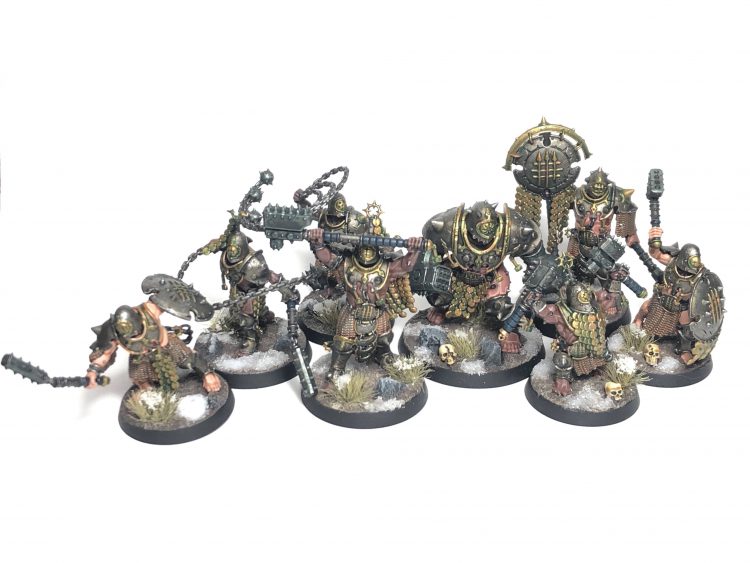
Building your warband
You need a hero…..
You can choose up to three models with the hero runemark, starting with the leader for your warband who must be from the faction you’ve chosen. Of the two extra heroes you can take, one of these can be an ally from the same Grand Alliance. According to the rules in White Dwarf 482 in ‘The Bladeborn Return’ if you select a Bladeborn Hero as an ally then you can select the rest of the fighters in that band (determined by the runemark that Underworld warband has) as if they were available to your faction, which means you can just drop whole Underworlds bands into your Warcry factions as long as they’re from the same Grand Alliance. This is very useful for compensating for your factions weak spots or if you are moving into Warcry from Underworlds.
Fighters
You have your roster of fighters available, which vary in terms of numbers significantly (so some AoS factions have over a dozen options and some Warcry factions have three or four).
What is your warband strong at? Untamed Beasts have a cool kitty that is fast and bites hard, Iron Golems have a big lad who hits very hard and is super tough, after you’ve picked up the cool stuff, what supports them? How many button pushing/treasure carrying jobbers can you take? What additional abilities can you unlock by taking specific models? Are these useful to you?
Allies
The additional allies are available to the Chaos bands (yet another thing pushing people into playing Chaos) in the form of four cool Warcry kits (that are now also medium monsters in the Slaves to Darkness AoS army) and let you take something a bit smaller than a monster, with a bunch of abilities and a really cool model. These are essentially centrepiece models for your band and cheaper in points and less ability hungry than the big monsters.
Allied heros are generally pricy (as you are adding a second hero to your warband) but the Bladeborn heroes allow access to the rest of their Underworld warband as well, meaning you can have Zarbag bring some Gloomspite to an Ironjawz warband, or add some Vampires to a Flesh Eater Courts list.

Thralls
Smaller monsters like Furies, Fell Bats and Chaos Hounds, these are an option for adding something fast and/or flying to your warband.They can’t pick up treasure but they can hold objectives or table quarters, or try and eat an enemy model doing so. You could go a bit wild with a monster mash warband between these, allies, monsters and whatever else you have available, and doing that would certainly be visually interesting.
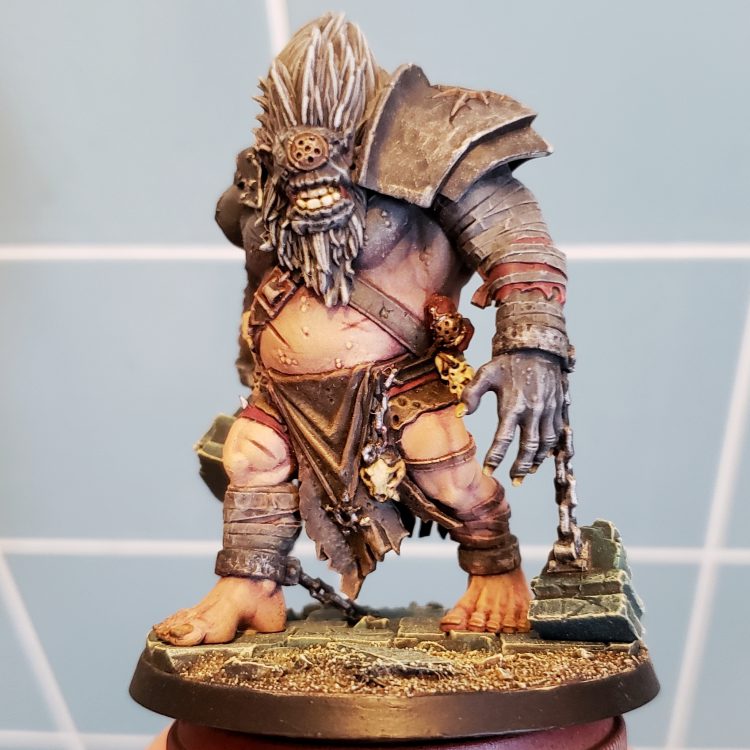
Monsters
There’s a whole section of monsters for each Grand Alliance, and of course Chaos comes out on top here with loads of options.
Monsters play the game somewhat differently to normal models, activating three times during the turn for one action each time. This means they get three opportunities to use abilities, and each monster has access to their own abilities as well as generic abilities. However your opponent gets access to several monster hunter abilities, the most obnoxious of which is Binding Ropes, which is a double and can reduce your monster to a 3” movement for the rest of the game depending on how many 4+s they can roll.
Monsters are able to greatly affect the game space because they are not just a large based model that’s very good at blocking movement, but also because they can destroy terrain. Knocking down a tower that your opponent has taken the treasure to the top of and is playing king of the hill on will never not be satisfying.
If you do take a monster they are so expensive in terms of points that it does drastically affect how your warband plays in terms of ability to control the board and hold objectives, so I would play a few games with your Warband as is before adding in a monster.

The Missions – The New Warcry Matched Play
Matched Play is back, with changes to improve the balance. There are six sets of victory conditions, and terrain is handled using a restricted set of terrain layout cards with the matched play runemark, and twists are not used. Tournament organisers have the option of removing this level of variation as well, using fixed terrain set ups on tables and specifying which missions are played in which rounds.
If you are running a three game event, I would heavily recommend choosing a mission from each sub category (for example Treasure Hunters, No Quarter and The Hidden Vault would be a good set of missions).
Treasure Missions
There are two missions that involve grabbing loot, and these play fairly differently to each other. It also means you need to remember the rules for carrying treasure, where a fighter can pick up treasure within 1” for free at any point during their movement, carrying treasure reduces your movement by 2 and means you can’t fly or perform the disengage action, you can only carry one treasure and dropping treasure is an action. This means treasure carriers end up slower and unable to break away from combat. Beasts and Monsters importantly can’t carry treasure, but can run around murdering treasure carriers.
Treasure Hunters
Five treasure tokens are placed on the map, at pre-determined positions. The deployment is completely equal between the players, and sets up one treasure token safely being grabbed by each side in turn one, but for the other three to get fought over. With five treasure tokens up for grabs, there’s potentially a lot of models getting slowed down and unable to fly or disengage, and fast models, particularly ones that can fly, are great for hunting down treasure carriers and either killing them or pinning them in combat when they can’t disengage.
At the end of the fourth battle round, the player with the most treasure counters in their position wins. So it doesn’t necessarily matter if your opponent grabs treasure early, it’s who has them at the end of the game.

The Cursed Relic
A single treasure, and if you are carrying it at the end of your activation then you take D6 damage. With the penalties for carrying treasure, it’s possible for your opponent to pin you in place and let the treasure kill you.
The victory conditions mean that whoever carries the treasure at the end of the game or has the most models within 3” if no one is carrying the treasure, wins. This means you could chase down and kill the treasure carrier and not pick the treasure up, just stand your model next to it, and win. It also means a beast or monster, who can’t pick up the treasure
This is very much capture the flag – except the flag slowly kills whoever holds it.
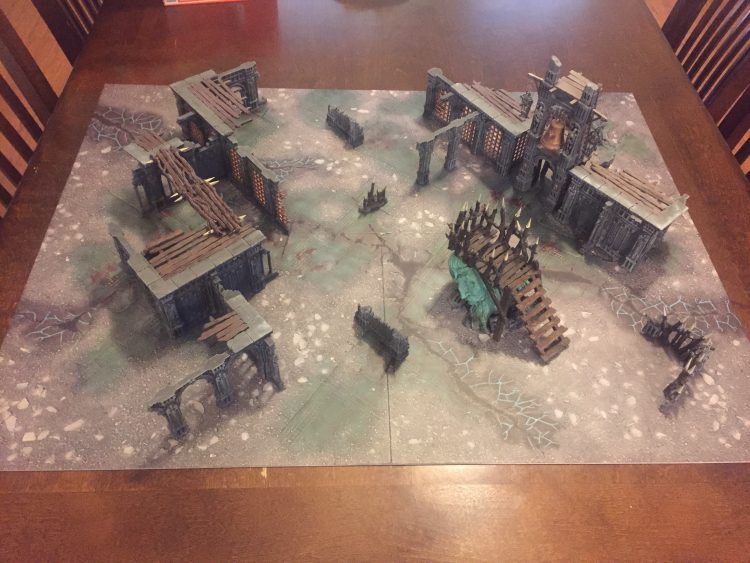
Board Control and Killing
The third and fourth missions are general board control and eliminating your opponents models. It’s always easier to hold table quarters if all your opponents models are dead though…..
No Quarter
At the end of four rounds, you capture a table quarter if you have models in it and your opponent does not, and the player with the most table quarters wins.
So you need to clear table quarters completely, and a beast or flying model jumping into a table quarter in the last turn means no one holds it. So you want your enemies stuff dead and/or to use that last turn jump into their quarter to prevent them scoring.
Reaper
Score points for enemy models taken down in each round, and in each round whoever has the higher total gets a victory point. After four turns the game ends and whoever has the highest number of points wins.
So this is potentially really interesting, and it is possible to win while getting completely tabled by killing an enemy model in each of turns 1-3 and not losing any yourselves. So it isn’t as straight forward as killing your opponents models, you have to kill more than your opponent for three turns out of four.
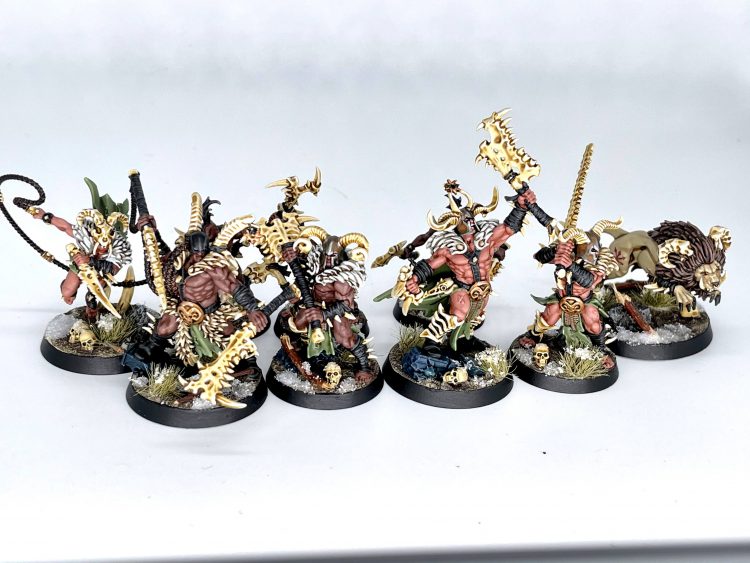
Hold the Objectives
Ley Lines
Five objectives to be held, but only ‘awakened’ objectives count, and you score a point for each awakened objective held. At the beginning of each combat phase, the player who lost initiative chooses to awaken one of the dormant objectives. So by the fourth round all the objectives are awakened, and the number of victory points available is five.
So this is a game where in the first couple of turns you probably want to lose initiative to awaken objectives that you will be able to easily hold. So capturing objectives and holding and keeping them will rack up victory points for you. There are a total of fourteen victory points up for grabs so to win you need eight, which you can get by the end of the third round.
The Hidden Vault
Three objectives are on the table, and at the end of the first round the players roll off and the winner removes an objective and at the end of the second round they do this again. At the end of the fourth round, whoever holds the objective wins.
To win ideally you remove the objective where your opponent has the most models and hope they don’t do it to you. Also the less models your opponent has left to put around the objective, the better, just saying.
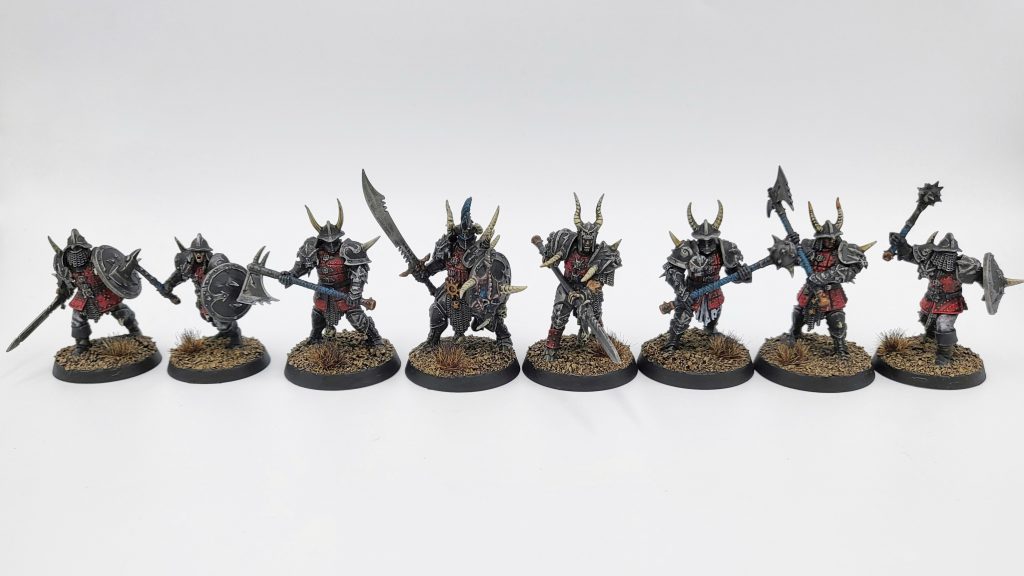
So in conclusion……
All the Warcry factions have their strengths and weaknesses. Killing the opposition will always help you achieve your objectives, but it’s not that simple and you’ll always need to control the board to some extent.
Choosing a warband is the first stage; I would recommend playing some games and fine tuning your warband choices before you go to events. The new Bladeborn rules really help you out with dropping in a bunch of allies and compensating for things you haven’t got in your main faction choice and I’m hoping we see further updates and hopefully a new Tome of Champions that updates the old Underworlds sprues and brings in the ones missed out and hopefully the Cursed City characters. But that’s a big wish list there.
Warcry is in a good place in 2.0, and choosing your warband is fairly flexible. Experiment, and find playstyles that you enjoy! As always, if you have any questions or suggestions for us, drop us a line at Contact@Goonhammer.com.


